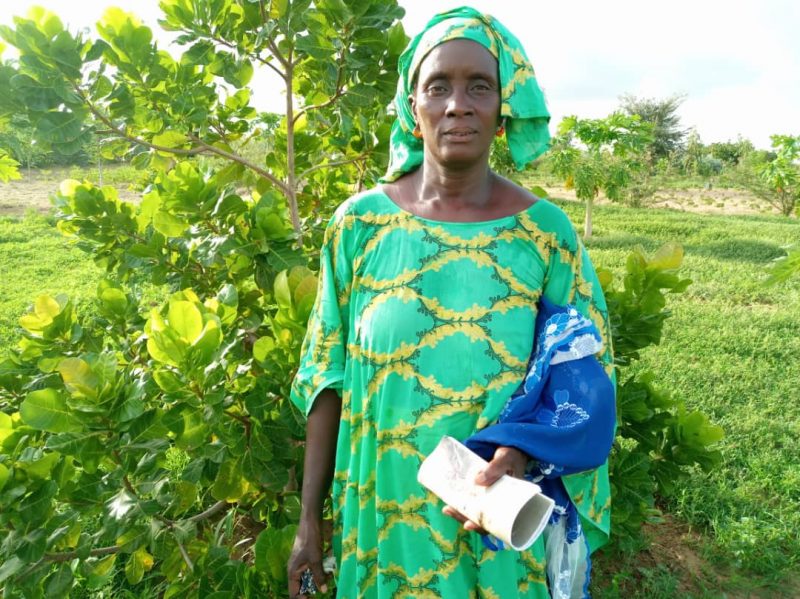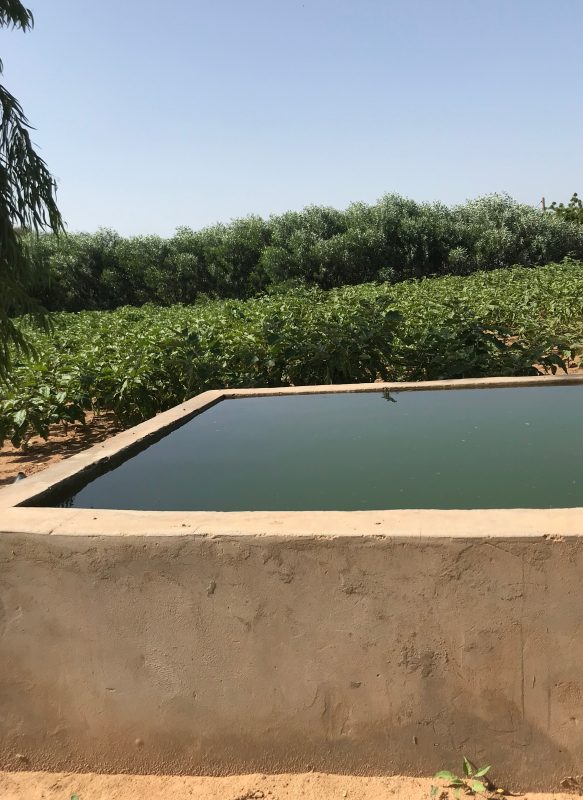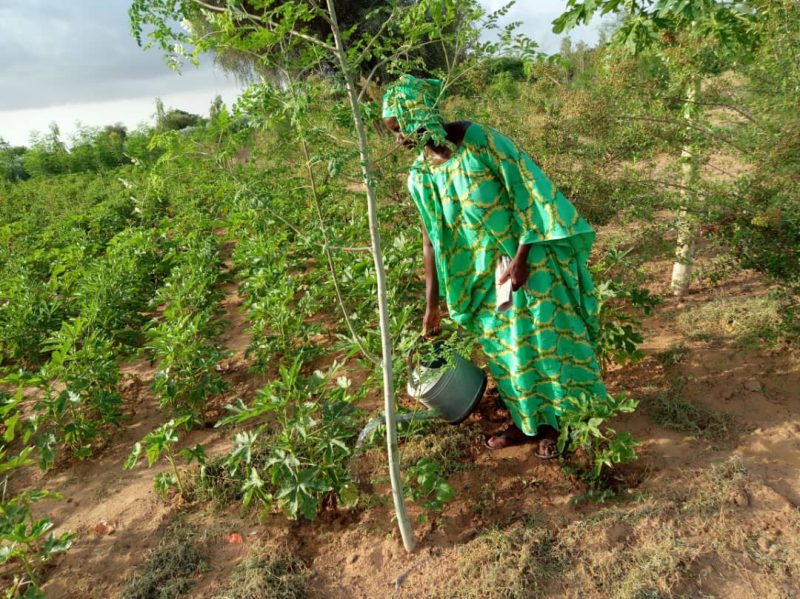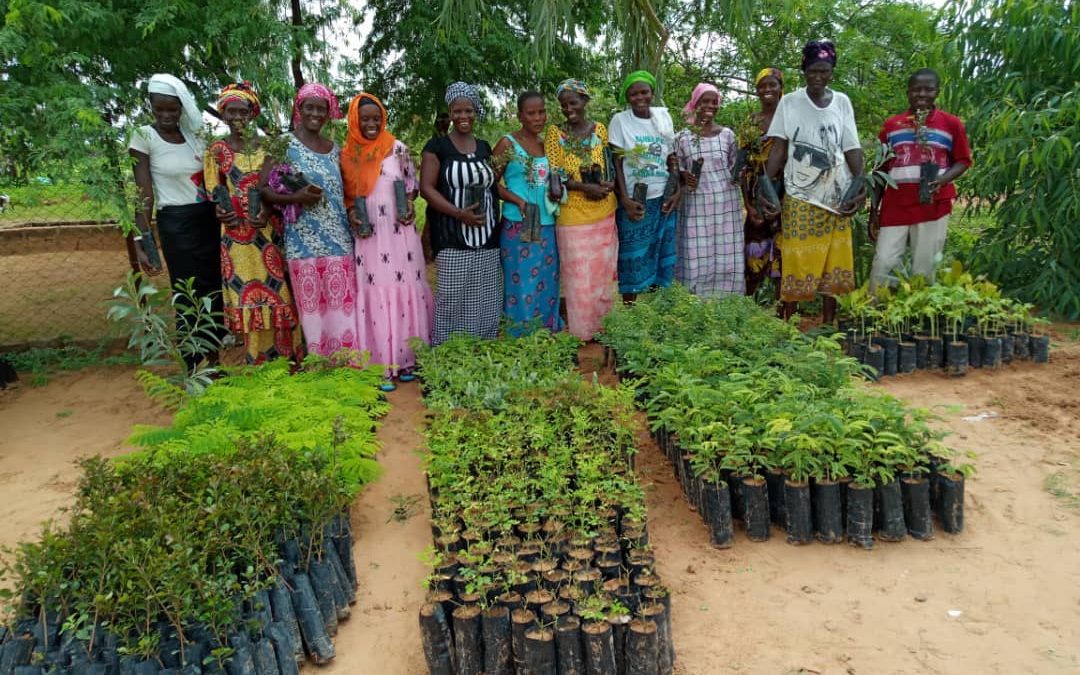As Senegal’s rainy season comes to a close, the days are becoming hotter, and the land is drying up once again. The village of Santhie has already finished planting their saplings for the annual tree-planting campaign during the rainy season. They have groups of extra trees still growing in sachets which will be gifted to CREATE!’s other partner communities. With the long dry season around the corner, it is so essential for villages to plant trees for the future. Not just for the near future, but also for the next generation in the community.
Santhie Plants Trees for the Future of Their Children
Meet Ndeye Birame Dabo, the cooperative garden president of Santhie and a mother supporting a family of seven. As both a caregiver for her large family and the leader of a talented community group, Birame is determined to see her village and children thrive and succeed. Part of this success comes from planning for the future today. “Rural communities always need wood for cooking and for other needs. That’s why we must plant many trees for our children’s future,” she tells us. “With CREATE!’s tree-planting campaign, we plant new trees every year.”

Ndeye Birame Dabo, the cooperative community garden president of Santhie.
The Benefit of Trees
While trees do supply firewood, and it is crucial to replenish the wood that people take, trees also have a variety of other uses in rural communities. Villages plant a range of trees for shade, live-fences, and produce. Some of these include papayas, acacias, cashews, lemons, mangos, moringa, beechwood, and flame trees. This variety serves as an essential source of food, medicine, shade, wind protection, and firewood. These trees are often fast-growing and resilient in Senegal’s climate. However, it is still essential to plant them during the rainy season so that they can form secure root systems before the peak of the dry season.
Planting Live-Fences Around Community Gardens
CREATE!’s partner communities plant trees to build live-fences around their cooperative community garden. The acacia mellifera tree provides a natural fence that keeps livestock and pests away from the produce. The mellifera’s thorny branches are naturally woven so tightly together that people claim even snakes won’t slither through!

Santhie’s live fence towers above the rows of lush eggplants. In the foreground is one of Santhie’s water basins. Women water the plants daily using the basin so that they can sustain their cooperative community gardens year-round.
The Big Picture
Senegal loses an average of 45,000 hectares of forest per year. Combined with climate change, these challenges are contributing to the rapid encroachment of the desert in rural Senegal. As a result, this causes the soil to degrade, agriculture to be less productive, temperatures to rise, and critical natural resources to decline. For rural communities, desertification leads to human migration, reduced quality of life, and loss of economic opportunity. This means that tree-planting has become even more vital for the sustainability of rural communities.
The village of Santhie resides in the northern Louga region, a much hotter and drier area facing the challenging impacts of desertification and deforestation. “For a few years, the [village] was like a desert,” Birame explains. “But now we can see a nice green space and many trees in our houses, mosque, school, and many other places.”
Women like Birame have the power to change the future of their community for the better. Her strength and determination as president inspire those around her to take also take their community’s future into their own hands. “I am speaking on behalf of the group,” Birame begins, “We are grateful to partner with CREATE! in the village. Many things have changed in our lives, and now, we are developing our community.”

Using techniques learned from CREATE!‘s technicians, Birame and her cooperative garden group care for their crops every day.

